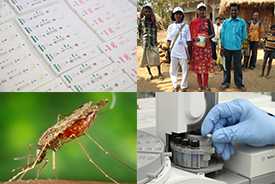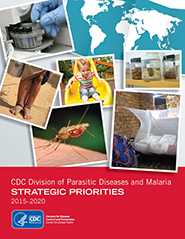Parasitic Disease and Malaria Strategic Priorities: 2015—2020

CDC’s Division of Parasitic Diseases and Malaria (DPDM) works to protect the health of Americans and the global health community through evidence-based public health action. Three strategic goals will prioritize and guide our global and domestic activities over the next five years:
- Reduce death, illness, and disability from parasitic diseases in the United States
- Eliminate the global burden of malaria and targeted neglected tropical diseases (NTDs)
- Advance research to detect, prevent, and eliminate parasitic diseases
A key priority is the epidemiological, diagnostic, and clinical assistance to states and health-care providers, and increased awareness of parasitic diseases in the United States, including a focus on the neglected parasitic infections(NPIs).
Another critical focus is support for the elimination of malaria and of the targeted NTDs in strategic regions, including developing critical strategic information (surveillance, monitoring and evaluation, and research) needed to support these efforts.
Highlights include:
- Improving diagnosis and detection of parasitic diseases in the United States
- Improving and accelerating malaria control programs, including co-implementing the President’s Malaria Initiative (PMI) with USAID and the Amazon Malaria Initiative (AMI)
- Expanding scientific leadership and technical support to accelerate eradication and elimination of targeted NTDs
- Strengthening the scientific evidence to support elimination of these parasitic diseases
- We look forward to our continued collaborations with U.S. federal and state government, country, and other public health partners as we work to achieve our vision for fewer parasites—healthier people.
- Page last reviewed: September 29, 2017
- Page last updated: September 29, 2017
- Content source:


 ShareCompartir
ShareCompartir
